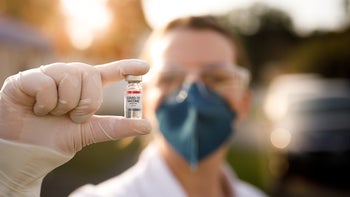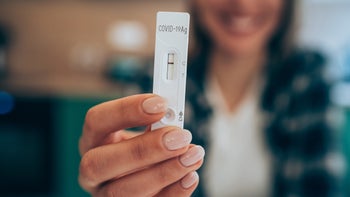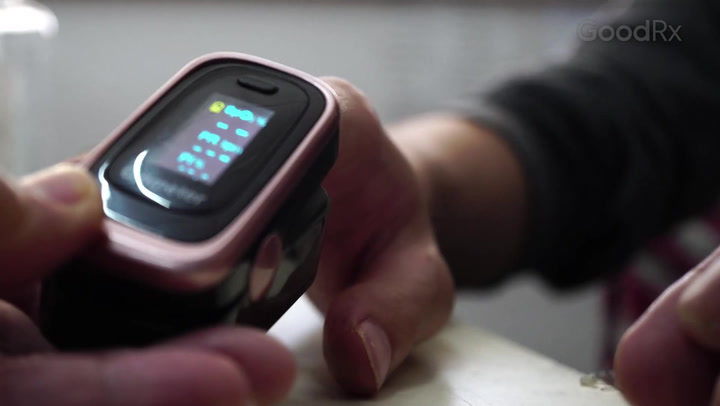
COVID-19 Headaches — Why They Happen and How to Get Rid of Them
Key takeaways:
Tension, cluster, and migraine headaches are common symptoms of COVID-19.
Headaches can also be a sign of post-COVID-19 syndrome (long COVID). Long COVID headaches can last for months.
Ibuprofen and acetaminophen can help with COVID headaches, but you may need prescription medication to manage headaches that last longer than a few days.

COVID-19, the illness SARS-CoV-2 causes, can lead to many different symptoms, including headaches. Headaches are one of the most common symptoms of COVID-19, with 1 in 4 people experiencing headaches during their illness.
COVID can trigger headaches that come and go for weeks and even months. If you’ve been experiencing headaches related to COVID, here are some helpful tips about how to manage them.
What type of headache do you get with COVID-19?
COVID-19 can trigger any one of the three common types of headaches:
Search and compare options
It can also trigger more general headaches.
For people who already have frequent headaches, getting sick with COVID can make things worse. People with migraines and tension headaches can experience more frequent or more severe headaches during and after COVID.
What does a COVID headache feel like?
Since COVID illness can trigger tension headaches, cluster headaches, and migraines, a COVID headache can feel like:
Dull, pressure-like pain anywhere on the head
A tight band around the head
Pain that’s worse around the scalp, temples, or back of the neck
One study showed that people with COVID-19 most often experience headache symptoms in these locations:
In the front of their head
Behind their eyes
Near their temples
Why does COVID-19 cause headaches?
It’s not clear why COVID triggers headaches, but scientists believe it may be linked to the virus’s ability to cause:
Inflammation around the brain and inside the brain
Inflammation of the blood vessels throughout the body (including the brain)
Dehydration and fever
Irritation of the trigeminal nerve
What really works to get rid of a headache? Three people share how they get rid of their headaches fast.
Headaches can be a sign of something serious. Here’s when you should go to the emergency room for a headache.
Do you still need to isolate if you have COVID? Yes, here’s when you’re most contagious with COVID and when it’s safe to go back to your usual routine.
All of these changes can trigger headaches. But it’s not clear which of these changes triggers headaches. It’s also not clear why only some people develop headaches when they’re sick with COVID.
Research shows that the SARS-CoV-2 virus is twice as likely to cause headaches as other respiratory viruses. But researchers don’t know yet why the virus causes headaches more often.
And it’s not just during the initial COVID-19 illness that people experience headaches. Headaches are one of the most common symptoms of long COVID (or post-COVID-19 syndrome). One study found that about 10% of people with long COVID developed post-COVID-19 headaches.
How long do COVID-19 headaches last?
Headaches from COVID-19 usually last 10 to 14 days. But people can still experience headaches even after they recover. One study found that more than half of people continued having COVID-related symptoms up to 6 months after their illness. And one of the most common symptoms is headaches.
Headaches and long COVID
Many people experience long-lasting headaches if they develop post-COVID-19 syndrome. Headaches usually come and go. Many people who develop these headaches didn’t have chronic headaches before getting sick with COVID. But others did have headaches in the past, and the headaches get worse with long COVID.
Right now, it’s not clear how long headaches due to long COVID last. But experts state most people can expect symptoms to last for 6 months or longer. Luckily, many people experience headache relief when they receive treatment. Many medications that treat headache syndrome also help relieve headaches from long COVID.
How do you get rid of a COVID-19 headache?
If you’re having headaches while you’re sick with COVID, you can do the following.
Take over-the-counter pain relievers
It’s safe to take both ibuprofen (Advil) and acetaminophen (Tylenol) for COVID-19 symptoms, including headaches. Make sure to follow dose guidelines on the package or talk with a healthcare professional about the best dose for you.
Stay hydrated
Dehydration can lead to headaches. You can become dehydrated easily when you’re sick, especially if you have a fever. Drink plenty of fluids throughout the day to stay hydrated.
Try a warm or cool compress
If you’re having tension headaches, a warm or cool compress can help. Apply a compress to your neck for about 15 to 20 minutes.
Talk with a healthcare professional about prescription medication
There are prescription medications for migraine and cluster headaches. Your primary care provider can prescribe medications if you have new migraines and cluster headaches. They can also adjust your treatment plan if you have a history of a headache syndrome and your headaches are getting worse while you’re sick with COVID.
When should you get medical care for COVID headaches?
Keep in mind that there are many causes of headaches, and certain types of headaches can be a sign of a serious medical condition. If you’re not sure whether your headache could be a sign of something more serious, get immediate medical attention.
Some signs that your headache could be something more serious include:
High fever
Neck stiffness
Pain with neck movement
Sudden-onset or thunderclap headache
Confusion
Sleepiness
Weakness or trouble moving your limbs
Slurred speech or trouble speaking
The bottom line
Headaches are a common symptom of COVID-19 illness, with 1 out of 4 people experiencing headaches. These headaches usually last for 1 to 2 weeks. Some people can experience headaches for longer periods of time, especially if they develop long COVID.
COVID can also trigger more headaches if you already have chronic headaches, like migraines. Ibuprofen and acetaminophen can help relieve COVID headaches. If your headaches last longer than a few days, talk with a healthcare professional about prescription treatment options. And get immediate medical attention if you develop a severe headache, especially with fever, neck pain, or changes in your ability to move, think, or speak.
Why trust our experts?


References
Al-Hashel, J. Y., et al. (2021). Coronavirus disease-19 and headache; impact on pre-existing and characteristics of de novo: A cross-sectional study. The Journal of Headache and Pain.
Bolay, H., et al. (2020). COVID-19 is a real headache! Headache.
Centers for Disease Control and Prevention. (2024). Signs and symptoms of long COVID.
Fulton, T. V., et al. (2022). Headache horizons: Headache in long COVID. Practical Neurology.
MedlinePlus. (2021). Migraine.
MedlinePlus. (2023). Cluster headache.
MedlinePlus. (2023). Tension headache.
Mutiawati, E., et al. (2021). Global prevalence and pathogenesis of headache in COVID-19: A systematic review and meta-analysis. F1000 Research.
Rocha-Filho, P. A. S., et al. (2022). Headache, anosmia, ageusia and other neurological symptoms in COVID-19: A cross-sectional study. The Journal of Headache and Pain.
Rodrigues, A. N., et al. (2023). Headache in long COVID as disabling condition: A clinical approach. Frontiers in Neurology.
Tana, C., et al. (2022). Long COVID headache. The Journal of Headache and Pain.
Taquet, M., et al. (2021). Incidence, co-occurrence, and evolution of long-COVID features: A 6-month retrospective cohort study of 273,618 survivors of COVID-19. Public Library of Science Medicine.
U.S. Food and Drug Administration. (2020). FDA advises patients on use of non-steroidal anti-inflammatory drugs (NSAIDs) for COVID-19.
Zayet, S., et al. (2020). Clinical features of COVID-19 and influenza: A comparative study on Nord Franche-Comte cluster. Microbes and Infection.
























